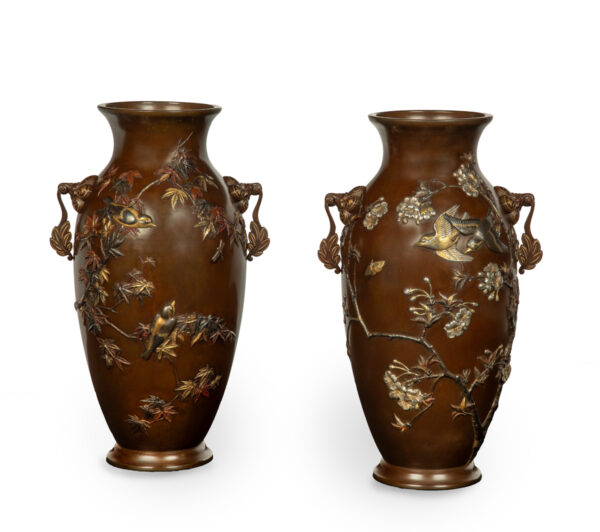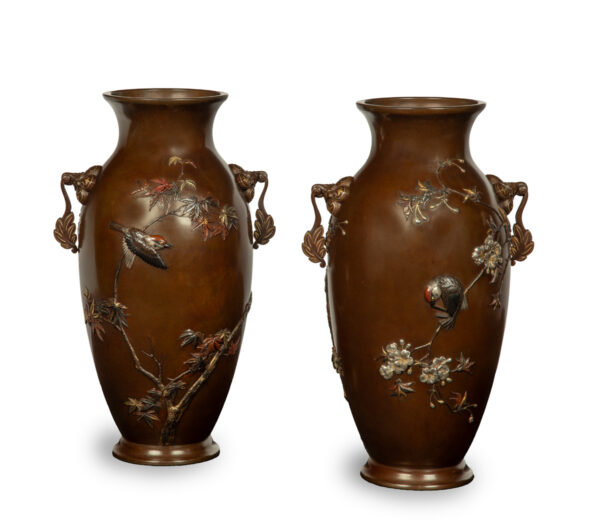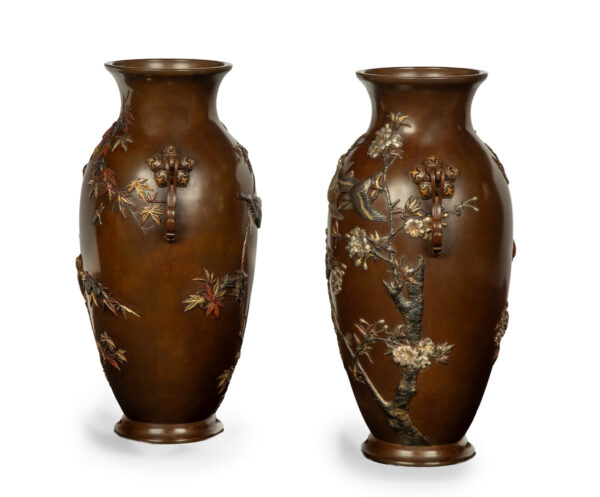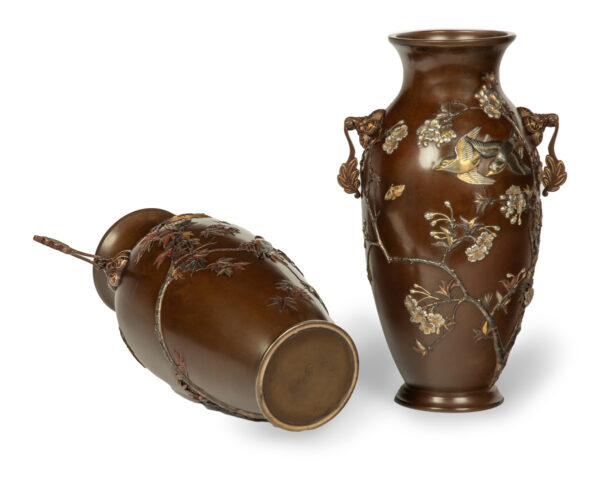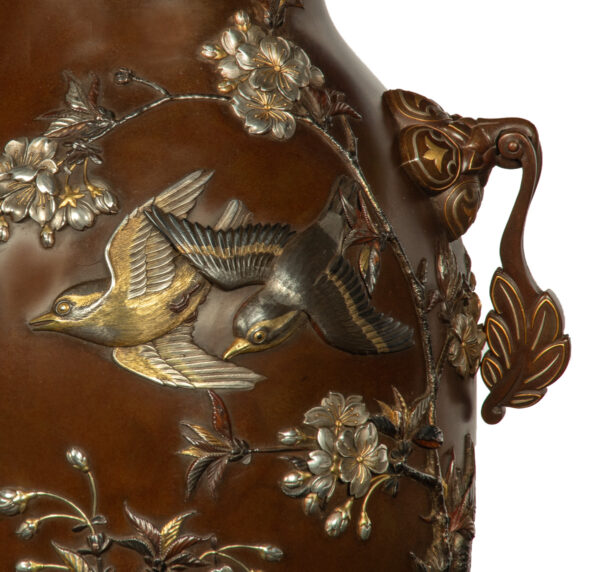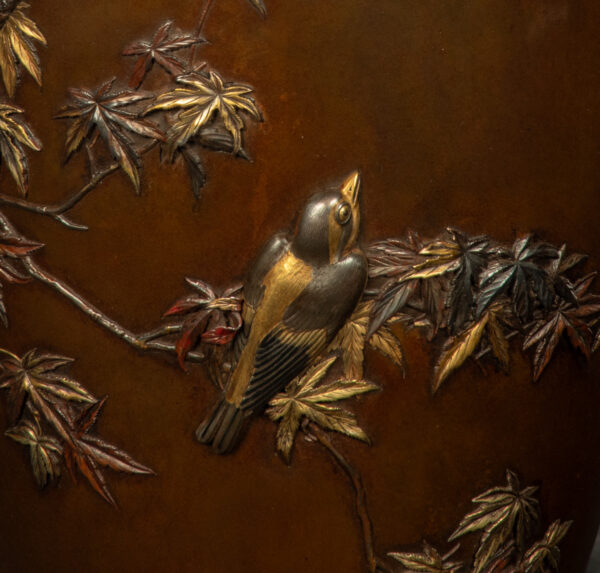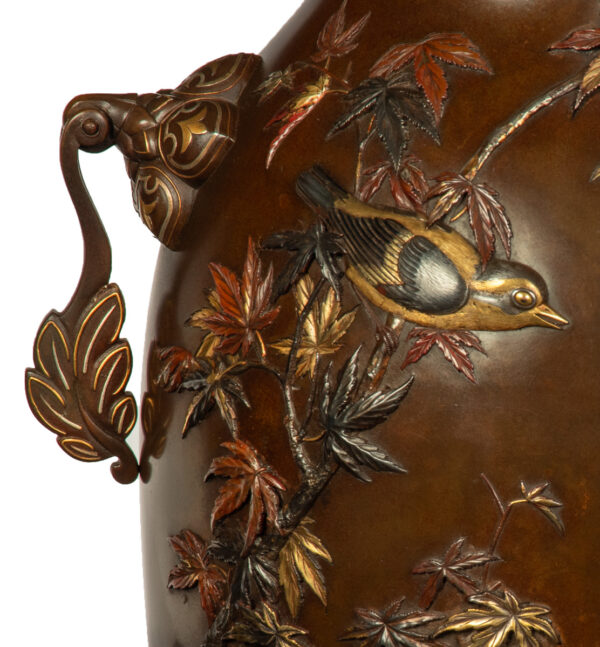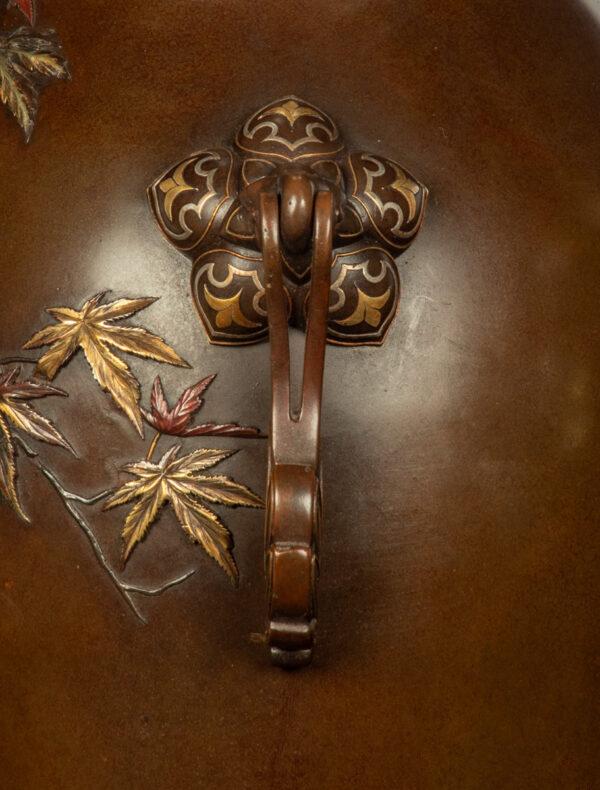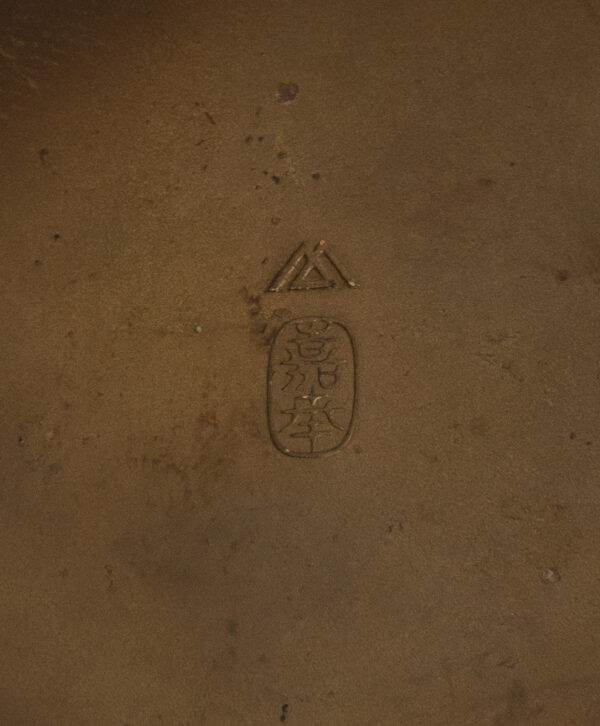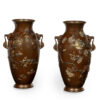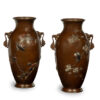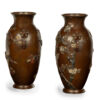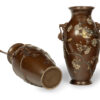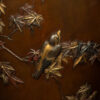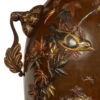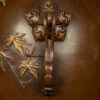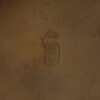As part of our Japanese works of art collection we are delighted to offer this large scale pair of Meiji Period (1868-1912) bronze and mixed metal vases from the studios of the highly accomplished Imperial artist Suzuki Chokichi , his art name Kako. On this occasion Kako has combined his incredible metalwork skills with his eye for the extraordinary to manufacture a pair of vases with extraordinary side handles that actually pivot on pins. The first vase is decorated with sumptuous quality silver and gold prunus blossom in which mixed metal birds in flight can be seen chasing a lone gold coloured moth, the rear houses a more tranquil scene of a bird sat upon a branch preening its feathers. Vase two contrasts this scene by way of birds in flight amidst autumnal maple leaves, the birds on the front elevation appear captivated by a lone dragonfly, each of these super quality heavy gauge vases are signed within an oval Kako seal beneath the double mountain mark to the underside, the double mountain mark representative of the Kiritsu Kosho Kaisha company , the government sponsored company that Kako headed up until its eventual closure in 1891.
Literature :
As previously stated Suzuki Chokichi (Kako) was director , designer and lead artist of the government sponsored Kiritsu Kosho Kaisha company until its closure in 1891 , his adventurous artistic ideas, as demonstrated in these vases, were reputedly not always well received by the government funded factory, they probably had one eye on commercial quantity and more repetitive works than Kako would have liked, he went on to produce many other individual high quality and now famous works housed around the worlds great collections and leading museums , including a monumental 2.8m Koro surmounted by an Eagle which resides in the Victoria and Albert museum, and arguably his most famous known work being a set of twelve mixed metal birds of prey, now rightfully resting in the Tokyo national museum .
Suzuki Chokichi’s work was eventually rewarded in 1896 when he was granted the rare accolade of becoming an Imperial artist ( Teishitsu Gigeiin ).I am pleased to say his incredible artistic skills are being recognized some 130 years later, by leading collectors of Japanese Meiji period metalworks.
Condition Report :
Fine Condition Throughout.
Approximate Sizes :
Height : 14 1/2″ 37 cm
Width : 9″ 23 cm
Depth : 7″ 18 cm
Free worldwide delivery and a certificate of authenticity are included within the price of this item.
